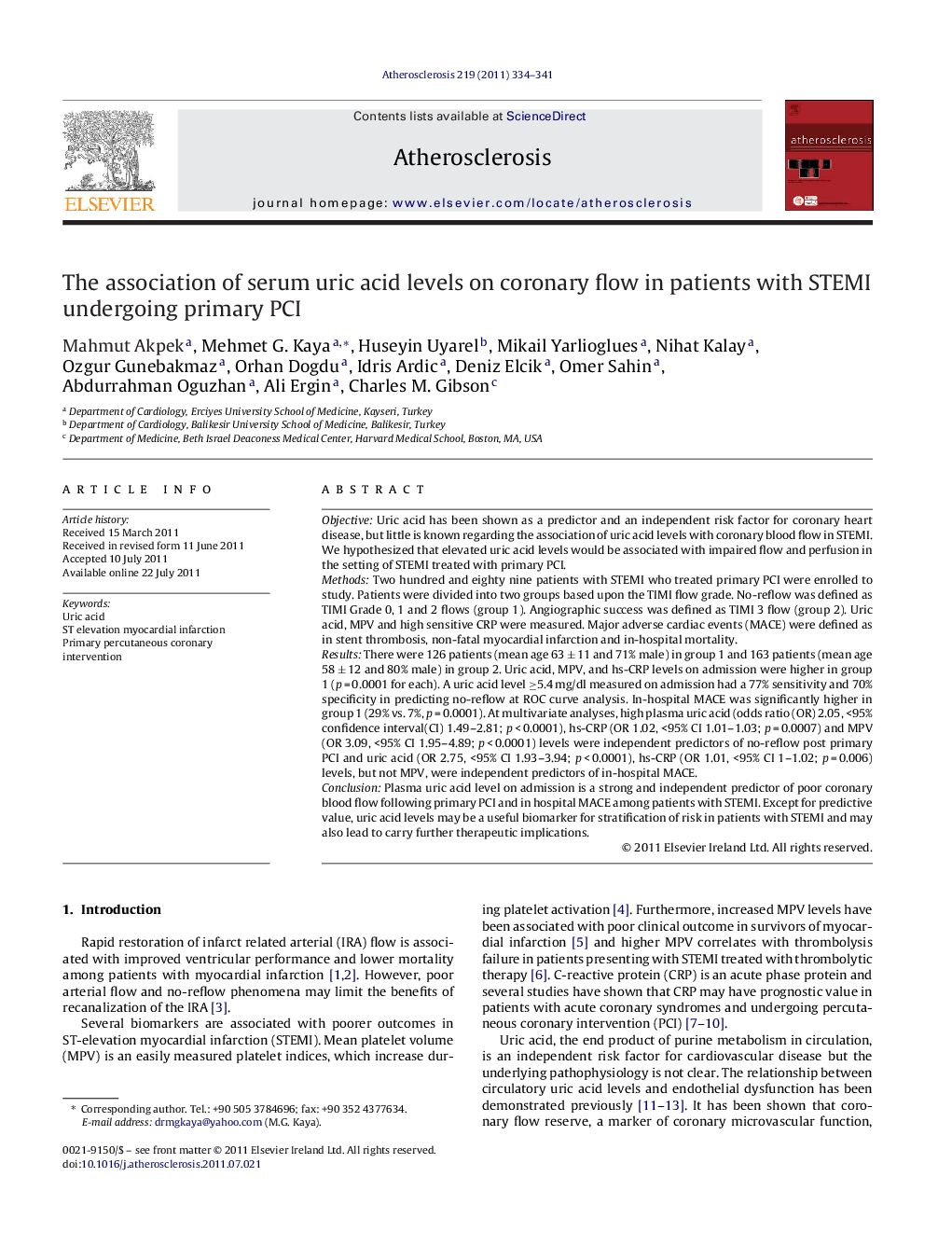| Article ID | Journal | Published Year | Pages | File Type |
|---|---|---|---|---|
| 5949894 | Atherosclerosis | 2011 | 8 Pages |
ObjectiveUric acid has been shown as a predictor and an independent risk factor for coronary heart disease, but little is known regarding the association of uric acid levels with coronary blood flow in STEMI. We hypothesized that elevated uric acid levels would be associated with impaired flow and perfusion in the setting of STEMI treated with primary PCI.MethodsTwo hundred and eighty nine patients with STEMI who treated primary PCI were enrolled to study. Patients were divided into two groups based upon the TIMI flow grade. No-reflow was defined as TIMI Grade 0, 1 and 2 flows (group 1). Angiographic success was defined as TIMI 3 flow (group 2). Uric acid, MPV and high sensitive CRP were measured. Major adverse cardiac events (MACE) were defined as in stent thrombosis, non-fatal myocardial infarction and in-hospital mortality.ResultsThere were 126 patients (mean age 63 ± 11 and 71% male) in group 1 and 163 patients (mean age 58 ± 12 and 80% male) in group 2. Uric acid, MPV, and hs-CRP levels on admission were higher in group 1 (p = 0.0001 for each). A uric acid level â¥5.4 mg/dl measured on admission had a 77% sensitivity and 70% specificity in predicting no-reflow at ROC curve analysis. In-hospital MACE was significantly higher in group 1 (29% vs. 7%, p = 0.0001). At multivariate analyses, high plasma uric acid (odds ratio (OR) 2.05, <95% confidence interval(CI) 1.49-2.81; p < 0.0001), hs-CRP (OR 1.02, <95% CI 1.01-1.03; p = 0.0007) and MPV (OR 3.09, <95% CI 1.95-4.89; p < 0.0001) levels were independent predictors of no-reflow post primary PCI and uric acid (OR 2.75, <95% CI 1.93-3.94; p < 0.0001), hs-CRP (OR 1.01, <95% CI 1-1.02; p = 0.006) levels, but not MPV, were independent predictors of in-hospital MACE.ConclusionPlasma uric acid level on admission is a strong and independent predictor of poor coronary blood flow following primary PCI and in hospital MACE among patients with STEMI. Except for predictive value, uric acid levels may be a useful biomarker for stratification of risk in patients with STEMI and may also lead to carry further therapeutic implications.
